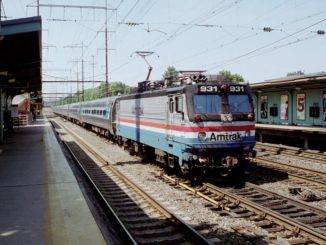
The United States has yet to fully embrace passenger rail as a way to curb traffic despite rail’s success in other countries, an Amtrak official told a U.S. Senate subcommittee this week.
“I believe that intercity passenger rail, given financial support commensurate with demand and a fundamental rethinking of our nation’s transportation strategy, can do so much more for America,” Anthony R. Coscia, chairman of Amtrak’s Board of Directors, testified, according to his prepared remarks.
“And yet America has yet to fully embrace investments in passenger rail as a tool to grow our regional and national economies, reduce traffic congestion on other modes, and create new travel opportunities,” Coscia added.
Amtrak is pointing to several recent news announcements as proof of passenger rail’s viability, including the highest-ever ridership on the Northeast Corridor (NEC).
Last month, Amtrak reported unaudited record revenue totaling approximately $3.2 billion for the fiscal year. That represented the fifth consecutive year of revenue growth, and the eighth out of the past nine years.
In addition, the passenger railroad covered 93 percent of its operating costs, up from 89 percent a year earlier. Amtrak’s $227 million operating loss in Fiscal Year is the railroad’s lowest since 1973, the railroad said.
“Passenger rail could be so much more, our economies could be stronger, and our lives better, if trains were faster, more frequent and more reliable in these regions,” Coscia said.
“This is to say nothing of the regions around the country where little or no high-quality rail connects metropolitan areas – regions like Atlanta to Charlotte, Houston to Dallas, Miami to Tampa, Pittsburgh to Cleveland, and Tucson to Phoenix,” Coscia said. “As a nation, we are squandering opportunities to improve our economies and quality of life by failing to make investments in the type of high-quality rail service that Amtrak plans for the NEC and that we see in existence or under development in nearly every other major economy in the world.”




